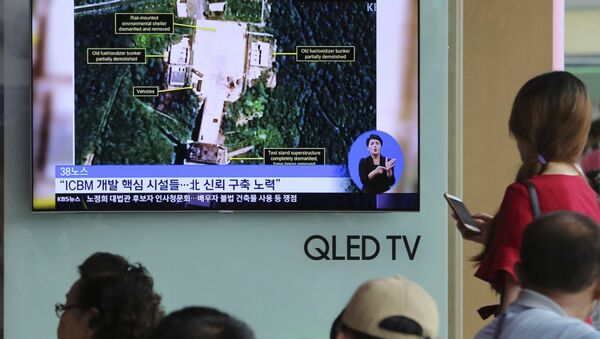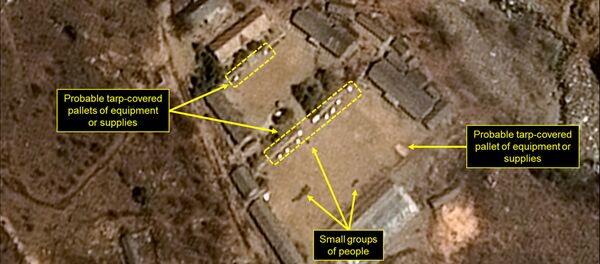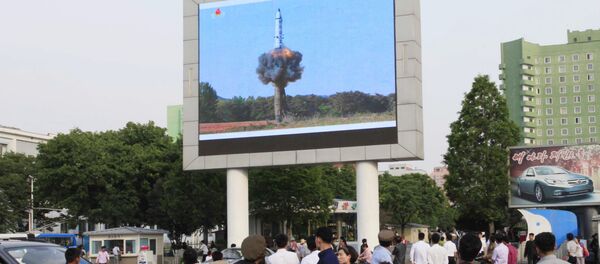Satellite imagery first published by outlet 38 North on Tuesday showed a rail-mounted processing building, where space launch vehicles are assembled, being dismantled, as its roof and supporting structures are partially removed. A large construction crane can also seen next to the structure.
In a second set of images, a rocket engine test stand is seen "razed and removed" as two fuel/oxidizer bunkers are being prepared for the same process. According to 38 North analyst Joseph Bermudez, with the test site seeming to be "completely dismantled" in two days time, it would suggest that the work likely began "within the past two weeks."
But even though the site appears to have been put out of service, North Korea could easily restart the launching station. A US intelligence source told The Diplomat that the structures could be "reconstituted within months."
"The engine test stand tear down does not severely impact North Korea's liquid fuel engine development," the source added, before suggesting that Pyongyang could also be relocating the structure to another base.
And this intelligence source isn't alone in its assessment. Nuclear expert and MIT Associate Professor Vipin Narang told the Australia Broadcasting Corporation that "there are a couple of caveats."
"They've removed the super-structure on the static engine test site, but they've kept the concrete, as far as we know," Narang told the publication, stressing that officials could rebuild.
"If they've already conducted all the tests they need to, then it really doesn't cost them very much. [They're] like pop-up sites and mobile test sites, so it may be that they've just taken steps they would have taken anyway," he added.
Speculations over the site's dismantlement follow US Secretary of State Mike Pompeo's news conference this week with US Secretary of Defense Jim Mattis and Australian officials, in which he stated that the US was working to verify whether North Korea had indeed disassembled the site.
"We've been pressing for there to be inspectors on the ground when that engine test facility is dismantled, consistent with Chairman Kim's commitment," Pompeo told officials. When asked what more North Korea needed to do, he noted that they needed to "fully denuclearize."
"That's the steps that Chairman Kim committed to and the world has demanded through UN Security Council resolutions. It's that straightforward," Pompeo said.
During the historic June 12 Singapore summit between North Korean leader Kim Jong Un and US President Donald Trump, it was agreed that Pyongyang would move to denuclearize. The joint agreement signed by both parties also called for North Korea to be granted security guarantees; promise to work toward peaceful relations; allow the recovery by the US of the remains of American soldiers killed during the 1950-53 Korean War; and maintain follow-up negotiations between high level officials.




